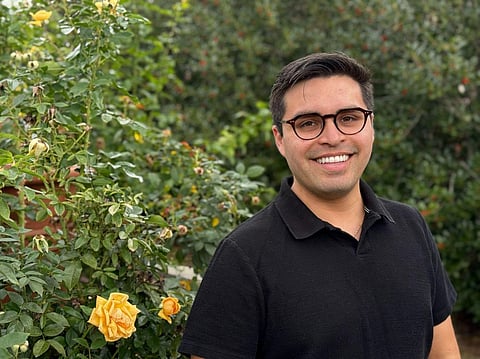

Pressure rose inside Browserbase long before the public recognized the company’s ascent. Its initial platform attempted to let machines browse the internet with human-like flexibility, but the underlying structure buckled whenever traffic surged. Each outage revealed deeper strain. Each slowdown signaled missing architecture. The early team understood the stakes, yet none had the background to overhaul the system without halting product development.
Royer Ramirez Ruiz entered during this tense period. He joined as the third hire and the only engineer tasked with stabilizing infrastructure that behaved unpredictably under load. No inheritance of plans. No guidance from an established operations group. He stepped into a blank environment and treated it as an engineering challenge that required discipline rather than guesswork.
His academic training in applied mathematics and physics shaped his instincts. He approached the failing system like a long-form experiment. Every unstable module was replaced with distributed components built to stay active even when individual machines faltered. He introduced testing sequences that forced the platform into stressful conditions, allowing him to observe how each region responded under real pressure. Each discovery sharpened his architecture decisions, building system confidence one layer at a time.
Within months, Browserbase no longer resembled the structure he inherited. It expanded into a coordinated network deployed across Oregon, Virginia, Frankfurt, and Singapore. More than 60,000 machines operated as unified nodes, communicating through patterns he engineered from scratch. Traffic spikes that once brought down services were now absorbed with steady performance across continents.
A turning point came when Royer transitioned Browserbase away from traditional relational systems and introduced NATS, a streaming architecture. The shift wasn’t cosmetic. It reshaped how the company processed instructions. Instead of forcing data through rigid pathways, the new system passed messages in real time, allowing global processes to communicate without delay. Latency dropped.Clusters stopped failing under heavy usage. At that time Browserbase was small and lean with only Engineering and Support or Business teams in place.
Kubernetes then became the backbone of Royer’s automation strategy. He structured deployment pipelines that updated thousands of environments while keeping them online. These pipelines handled rollouts, rollbacks, scheduling, and resource allocation without slowing customer activity. What once required coordinated manual steps now ran through self-regulating processes he wrote and refined.
Royer’s philosophy relied on visibility. He developed observability tools that exposed system behavior at granular depth. Dashboards tracked performance across regions, helping him detect irregular patterns before they reached customers. Troubleshooting shifted from emergency sprints to calm analysis. He often said, “Engineers work best when their systems speak clearly.” He built Browserbase’s architecture so clearly that the system announced its own stress signals before service interruption could occur.
As usage grew, global requests climbed into levels the original prototype could never withstand. Yet the infrastructure held steady. Developers using Browserbase’s platform appreciated the consistency, and major AI companies integrated the system into their automation pipelines. Thousands of concurrent workloads no longer threatened stability because the architecture had been constructed to absorb impact instead of crack under it.
Every region behaved differently. Oregon carried leading AI agents. Virginia supported enterprise clients. Frankfurt and Singapore balanced international demands. Under heavy load, each location pushed back in its own way. Royer tracked these patterns to refine the system’s resilience. Through these refinements, he taught Browserbase’s infrastructure to maintain predictable performance even when demand surged without warning.
He made decisions with long-term growth in mind. When usage increased across the United States, Europe, and Asia, his distributed structure adapted without restructuring. When new clients required rapid onboarding, his Kubernetes-driven deployments handled expansion while keeping existing workloads stable. The system adapted without buckling because the architecture had been assembled with headroom for stress.
Browserbase later entered periods of intense growth tied to its funding progress. Royer’s engineering groundwork absorbed that pressure without forcing the company to pause or rebuild. Even after he left the company, the infrastructure he created continued operating at scale. More than 1,000 organizations and 20,000 developers still rely on the patterns and processes he authored.
Today, Royer serves as a Staff Engineer at Maven Robotics in Santa Clara. His focus is hybrid systems that connect cloud environments with physical robotics deployments. The work requires dependable architecture, real-time communication, and an instinct for building structures that hold steady during peaks of demand. Those are the same instincts he strengthened during his years at Browserbase.
He rarely frames his work dramatically. Yet his fingerprints remain across the distributed systems that keep automation products running without interruption. “Reliability comes from design choices made long before anyone sees the result,” he said. That idea guided his tenure at Browserbase and continues to guide his engineering philosophy.
